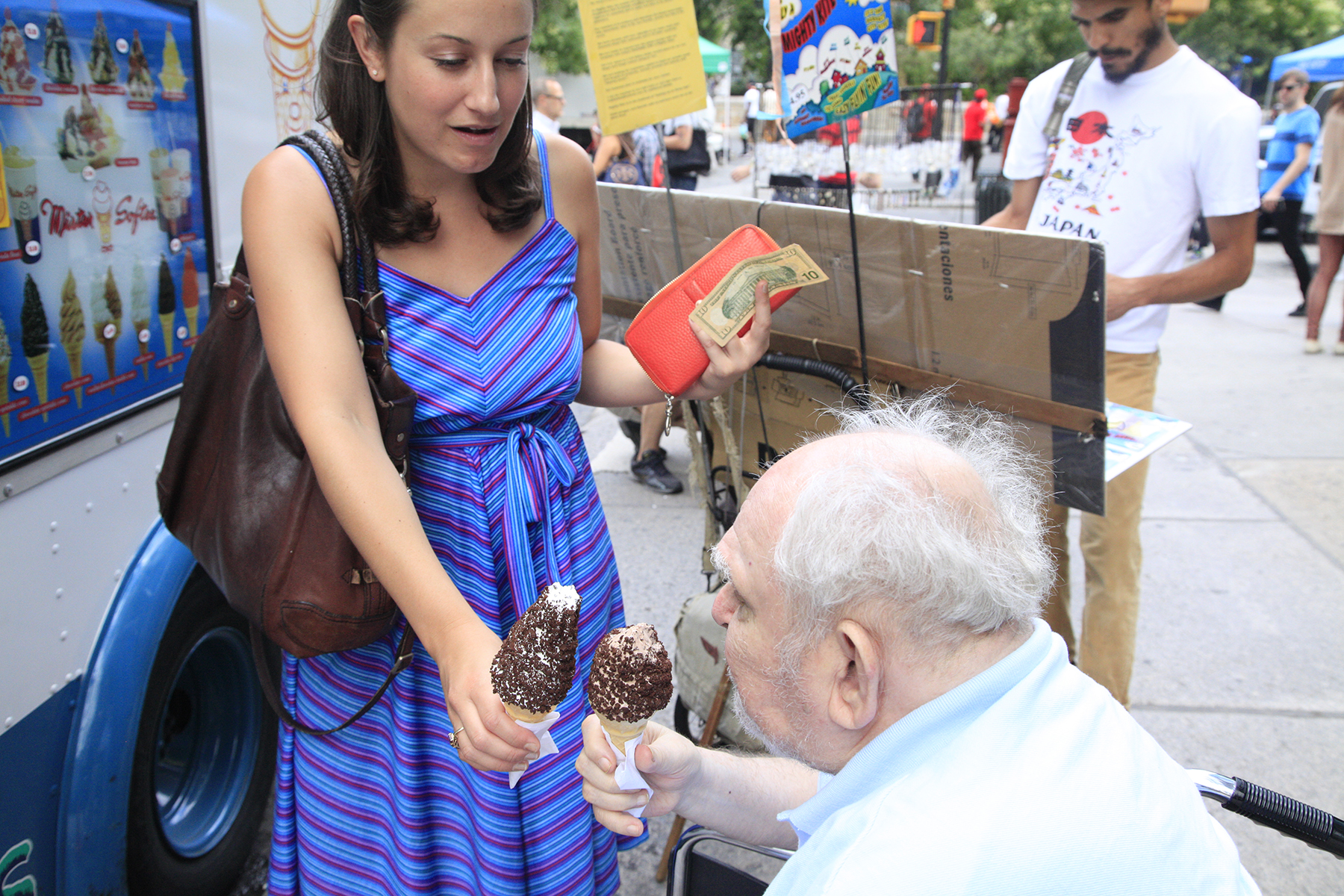AARP Hearing Center
Talking (and Listening) to People With Dementia
By Laura Hahn, April 21, 2014 04:21 PM
I talk with my friend Arthur twice a week, and each conversation starts the same way.

"Hi Arthur, it's Laura."
"Laura, dawling. Whe-ah are you?"
"I'm in Ohio."
"You're still the-ah?"
It's been almost 10 months since my boyfriend, Joe, and I left New York.
"Yep, still here! Grad school is going really well, and it's great to be close to family. It's hard being far from friends, though. I wish we were tasting olives together right now."
>> Sign up for the AARP Health Newsletter
"Me, too."
Arthur just turned 89, and his dementia is slowly progressing. Our four-year friendship has taught me a lot, especially about the art of conversation.
Conversations with people with dementia can be challenging, but perhaps that's because they feel different at first. The give and take, the natural back and forth of asking questions and sharing information, can seem imbalanced.
But who, exactly, has been in a perfectly balanced conversation? Do they exist? And, if so, are they any fun?
Talking to people with dementia, I've come to understand, is like talking to anyone else. It's a dance, and you're always finding new steps. The lessons I've learned over the years from Arthur and from others make chats involving cognitive challenges a little easier, but they also apply to all kinds of conversations. Here are a handful:
Reorient your listener. It's never a bad idea to get on the same page. That's what I do with my Ohio recap at the start of our talks via phone or FaceTime. I also always say my name when I call Arthur's landline, even though I think he recognizes my voice. Reminders make conversations more comfortable because nobody's guessing.
Take the front seat. Or the back one, depending on your read of the situation. On quiet days, I find myself dominating the conversation with Arthur, but my stories oftentimes trigger reactions that might not surface on their own. Be willing to take the lead, even if that's not your typical conversation style.
>> Get discounts on health services with your AARP Member Advantages.
Say "Yes, and ..." This is a standby strategy for improv actors to keep the dialogue going. Leaders in creative arts programming for people with dementia, such as Gary Glazner of the Alzheimer's Poetry Project and Elizabeth Lokon of Opening Minds through Art (OMA), also use this as a tactic. All contributions to the conversation - both verbal and nonverbal - are worthy and welcome.
Go where it leads. There are times I want to talk about something in particular - let's say Arthur's family business (a doughnut shop in Brooklyn) - but he won't play ball. And that should always be fine. Checking expectations at the door frees the conversation to take its own shape.
No two people with dementia are alike. Different strategies will speak to different individuals. But considering conversations in a new light just might spark dialogue you didn't expect.
After we talk about Ohio and New York and life for a while, Arthur always asks another question.
"How's Joe?"
And just like that, he remembers my boyfriend - and like any good friend, we have plenty to talk about from there.
Photo: Briana E. Heard
Also of Interest
- Grandma Betty, Instagram Star: Why 'Cute' Can't Capture It
- 9 Nasty Things to Throw Away Today
- Fight fraud and ID theft with the AARP Fraud Watch Network.
- Join AARP: Savings, resources and news for your well-being
See the AARP home page for deals, savings tips, trivia and more































































